| Operation • Hazardous Cargoes • Dangers • Handling • Cleaning • Gas Blanketing • Heating • Miscellaneous • Fault Finding |
| Loaded Tanks | Empty Tanks | While
ISO standards do not permit containers to be lifted by angled slings from
the top corner castings, most Tankspan tanks are designed and tested to
be lifted from both the top and bottom corner castings. When lifting from
the top castings the angle of the slings should not be less than 50 degrees
to the horizontal. When connecting to the bottom corner castings the slings
must be not less than 45 degrees. Care must be taken to ensure that the slings do not touch the tank during lifting. For safe and efficient handling of containers a properly designed spreader is always to be recommended. 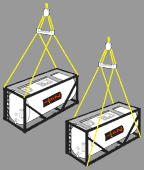 Road, Rail and Ship For certain dangerous liquids definitive filling limits are specified. These rates are 97%, 95% or 90% according to the classification of the cargo or its vapour pressure, or whether the cargo is heated in transit. Up to a maximum 20% ullage is normally observed for non-classified products. |
||||
Loaded tank containers may
ONLY be lifted by a TOP SPREADER attached either to a sidelift truck, a
gantry crane or container-handling vehicle such as a straddle carrier.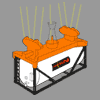
Extreme caution must be exercised when handling loaded containers by a sidelift truck fitted with a top lift attachment, as the change in the centre of gravity due to cargo surge may result in instability of the vehicle. The tank container should be moved when suspended at the lowest practical height. 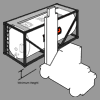
|
In addition to the handling techniques
for loaded tanks, empty tank containers may be lifted by side connecting
the two top corners, provided that the lower transverse support frame contacts
the bottom corner castings or the corner posts.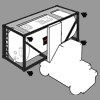
|
|||||
| Malpractice | ||||||
On no account should a tank
container be lifted by equipment contacting the tank shell, or any part
of the frame other than the corner castings or corner post.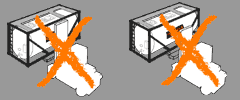 On No account should lifting forks or tines of a conventional forklift truck be used on any tank container. Contact between lifting equipment and the tank shell or its insulation may result in serious damage to the tank and the escape of cargo. |
||||||
| Ullage | ||||||
| Transporting by Road, Rail and Sea Only vehicles constructed or specifically adapted for the carriage of ISO containers should be used. Excessive cargo surge can affect vehicle stability. The maximum ullage permitted for a given product is controlled by the appropriate regulations. |
||||||
| printing:
for best results use these links to download as PDF |
||||||